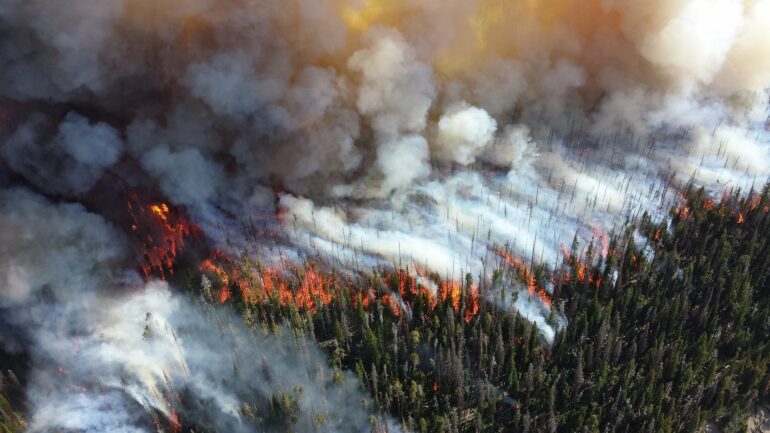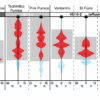The 2021 wildfire season broke records globally, leaving land charred from California to Siberia. The risk of fire is growing, and a report published by the UN last month warned that wildfires are on track to increase 50% by 2050. These fires destroy homes, plant life, and animals as they burn, but the risk doesn’t stop there. In the journal One Earth on March 18, researchers detail how the brown carbon released by burning biomass in the northern hemisphere is accelerating warming in the Arctic and warn that this could lead to even more wildfires in the future.
Blazing wildfires are accompanied by vast plumes of brown smoke, made up of particles of brown carbon suspended in the air. This smoke poses health hazards, and can even block out the summer sun, and researchers suspected that it might also be contributing to global warming.
In 2017, the Chinese icebreaker vessel Xue Long headed for the Arctic Ocean to examine which aerosols were floating around in the pristine Arctic air and identify their sources. The scientists on the vessel were particularly curious about how brown carbon released by wildfires was affecting the climate and how its warming effects compared to those of denser black carbon from high-temperature fossil fuel burning, the second most powerful warming agent after carbon dioxide.
Their results showed that brown carbon was contributing to warming more than previously thought. “To our surprise, observational analyses and numerical simulations show that the warming effect of brown carbon aerosols over the Arctic is up to about 30% of that of black carbon,” says senior author Pingqing Fu, an atmospheric chemist at Tianjin University.
In the last 50 years, the Arctic has been warming at a rate three times that of the rest of the planet, and it appears that wildfires are helping to drive this discrepancy. The researchers found that brown carbon from burning biomass was responsible for at least twice as much warming as brown carbon from fossil fuel burning.
Like black carbon and carbon dioxide, brown carbon warms the planet by absorbing solar radiation. Since warming temperatures have been linked to the rise in wildfires in recent years, this leads to a positive feedback loop. “The increase in brown carbon aerosols will lead to global or regional warming, which increases the probability and frequency of wildfires,” says Fu. “Increased wildfire events will emit more brown carbon aerosols, further heating the earth, thus making wildfires more frequent.”
For future research, Fu and his colleagues plan to investigate how wildfires are changing aerosol composition from sources other than brown carbon. Specifically, they are interested in the effect of fires on bioaerosols, which originate from plants and animals and can contain living organisms, including pathogens. In the meantime, Fu urges that attention be focused on wildfire mitigation. “Our findings highlight just how important it is to control wildfires,” he says.
More information:
Pingqing Fu, Brown carbon from biomass burning imposes strong circum-Arctic warming, One Earth (2022). DOI: 10.1016/j.oneear.2022.02.006. www.cell.com/one-earth/fulltex … 2590-3322(22)00091-4
Citation:
Wildfires devastate the land they burn, and they are also warming the planet (2022, March 18)



